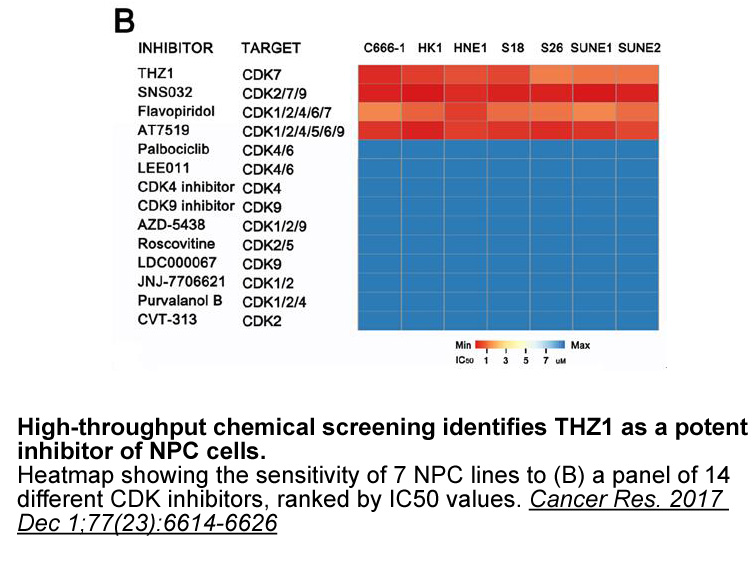Archives
The mechanism governing how mechanotransduction
The mechanism governing how mechanotransduction signals regulate a number of genes involved in cartilage hemostasis remains unclarified. Mitogen-activated protein kinase (MAPK) pathways are activated by static and dynamic compression of cartilage (31 32). c-Fos/AP-1 is downstream of the MAPK pathway. Studies have demonstrated that c-Fos/AP-1 gene expression levels dramatically increase within 1 h of a variety of intact cartilage loading regimens, and that the upregulated MMP expression through c-Fos/AP-1 is suppressed by MAPK inhibition [31]. We predict that T5224 may block MAPK/c-Fos/AP-1 pathway activation in response to mechanical instability in OA cartilage.
The reduction of osteophyte formation observed in the present study seemed to be a secondary effect of T-5224 following the protection of articular cartilage damage. However, McCabe et al. reported that differentially expressed fos and Jun family members could play a role in osteoblast differentiation depending on the developmental regulation of bone-specific gene expression [32]. Lewinson et al. reported that mechanical stimulation of regenerating bone by daily distraction stimulated the expression of early-response genes of the AP-1 family of transcription factors [33]. Although there are no reports regarding the direct effect of c-fos/AP-1 inhibition on osteophyte formation, future study should be warranted.
Acknowledgements
Introduction
Less than 2% of the human genome codes for functional proteins (Alexander et al., 2010). Scattered throughout the rest of the genome are regulatory regions that can exert control over genes hundreds of thousands of CTX0294885 pairs away through the formation of DNA loops. Loop-based transcriptional regulation plays a part in many biological contexts but is critically important for human development and cellular differentiation (Krijger and de Laat, 2016). Alteration of DNA loops has been implicated in a variety of developmental abnormalities and human diseases (Hnisz et al., 2016; Montavon et al., 2011; Narendra et al., 2016).
Typically acting in cis at distances no larger than 2 Mb, DNA loops are often confined within structures known as topologically associating domains (TADs) (Dixon et al., 2012; Nora et al., 2012; Dekker et al., 2013). TADs themselves are partitioned into two or more nuclear compartments of similar transcriptional activity (Imakaev et al., 2012; Lieberman-Aiden et al., 2009). At the local level, loops are controlled by proteins, including CCCTC-binding factor (CTCF), cohesin, Nipped-B-like protein (NIPBL), MAU2 chromatid cohesion factor homolog (MAU2), and Wings apart-like protein homolog (WAPL) (Busslinger et al., 2017; Haarhuis et al., 2017; Heidari et al., 2014; Nora et al., 2017; Rao et al., 2014; Sofueva et al., 2013). Cohesin is first loaded onto DNA by NIPBL and MAU2 (Ciosk et al., 2000). Extrusion of DNA through the cohesin complex leads to enlargement of loops. Properly oriented CTCF binding can stop or pause the extrusion process. Ultimately, cohesin is removed from chromatin by WAPL (Busslinger et al., 2017; Gandhi et al., 2006; Haarhuis et al., 2017). In addition to these cell-type-invariant mechanisms, several recent studies have demonstrated a role for tissue-specific transcription factors in loop formation (Krivega et al., 2014; Lee et al., 2017; Song et al., 2007). While our knowledge regarding the general characteristics and mechanisms of loops is improving, much less is known regarding the scope, mechanisms, and functional significance of dynamic looping events during biological processes such as cellular differentiation.
Rapidly evolving DNA-sequencing-based technologies have provided increasingly comprehensive views of DNA looping in human cells and are improving our ability to address these salient questions. Hi-C is a genome-wide approach to detect contact frequencies between all mappable regions of the human genome. Application of this approach has revealed extensive chromatin reorganization, both within stable chromatin domains and in higher-order compartment localization, during embryonic stem cell differentiation and across human tissues and cell types (Dixon et al., 2015; Schmitt et al., 2016). However, the sequencing depth required to achieve high-resolution maps of contact frequency and the high number of nonspecific ligation events have made the identification of loops using Hi-C problematic.
through the cohesin complex leads to enlargement of loops. Properly oriented CTCF binding can stop or pause the extrusion process. Ultimately, cohesin is removed from chromatin by WAPL (Busslinger et al., 2017; Gandhi et al., 2006; Haarhuis et al., 2017). In addition to these cell-type-invariant mechanisms, several recent studies have demonstrated a role for tissue-specific transcription factors in loop formation (Krivega et al., 2014; Lee et al., 2017; Song et al., 2007). While our knowledge regarding the general characteristics and mechanisms of loops is improving, much less is known regarding the scope, mechanisms, and functional significance of dynamic looping events during biological processes such as cellular differentiation.
Rapidly evolving DNA-sequencing-based technologies have provided increasingly comprehensive views of DNA looping in human cells and are improving our ability to address these salient questions. Hi-C is a genome-wide approach to detect contact frequencies between all mappable regions of the human genome. Application of this approach has revealed extensive chromatin reorganization, both within stable chromatin domains and in higher-order compartment localization, during embryonic stem cell differentiation and across human tissues and cell types (Dixon et al., 2015; Schmitt et al., 2016). However, the sequencing depth required to achieve high-resolution maps of contact frequency and the high number of nonspecific ligation events have made the identification of loops using Hi-C problematic.